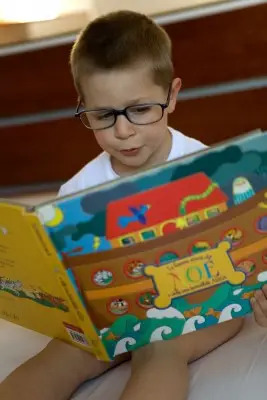A staggering number of children who have learning difficulties are also suffering from hidden vision problems, which may be the cause of their trouble in school. Local expert Michal Luchins, O.D., of Family Vision & Learning Center in Suffern, NY, weighs in on the critical link between vision and learning and how to tell if your child is struggling with learning-related vision problems.

It is estimated that up to 60 percent of students identified as “problem learners” have undetected vision problems. Yet many vision problems go undetected because a child is told he or she has 20/20 vision and healthy eyes. But vision is far more than 20/20. “Vision” is far more than just eyesight. Vision occurs in the brain, not in the eyes. The 20/20 test only tests the eyesight—the clarity that an individual sees at twenty feet. It does not test how well one sees at reading distance. In fact, the 20/20 test fails to evaluate many important aspects of normal vision that are required during the learning process. This includes tracking, eye teaming, depth perception, and visual perceptual skills, all of which may not have been evaluated, yet typically where a vision-related learning problem lies.
A developmental optometrist’s concern and primary focus is with identifying and treating a delay in the patient’s ability to access and process visual information in ways that are the necessary prerequisites for developmental learning. Children with vision problems not only have difficulties reading, but may have a hard time learning basic mathematical skills, yet studies have shown that if the appropriate vision therapy is given, math skills improve.
Here’s how to look for signs of “hidden vision problems.” Do not expect children to come to you and tell you what their visual symptoms are. Children only have one set of eyes and have never seen differently. Even children walking around seeing double or who cannot clearly see the words in their books rarely complain. In addition to symptoms mentioned earlier, be on the alert for headaches, frequent loss of place when reading, poor eye-hand coordination, poor reading comprehension, excessive rubbing of the eyes, sensory integration dysfunction, poor spelling, or difficulty focusing or paying attention or sitting still — especially during reading. Any of these could indicate vision problems, yet the visual system is usually overlooked by health professionals who are not eye doctors in determining the cause of these common symptoms.
Any of the above symptoms may be a sign that your child may be struggling with a learning-related vision problem. Fortunately, through appropriate glasses and vision therapy, most learning-related vision problems can be corrected. Protocols may involve ambient lenses, vitamin supplements, and a prescribed program aimed at eliminating faulty vision skill patterns and rebuilding them correctly. For an in-depth checklist of symptoms, information on vision therapy, and the critical link between vision and learning, check out covd.org and optometrists.org/DrLuchins.
Michal Luchins, O.D., who practices at Family Vision & Learning Center in Suffern, specializes in vision therapy and developmental optometry. She is also certified in both early childhood education and processing and cognitive enhancement.





















